The latest Ford Fiesta ST hot hatch has been revealed which matches the performance of the brand’s current range-topping ST200 model. The new ST hits 62mph from rest in 6.7sec — 0.2sec faster than the outgoing Fiesta ST.
Click here to read our first drive review of the all-new Ford Fiesta ST
Unveiled officially at the Geneva motor show today, the Fiesta ST remains an important halo model for Ford, particularly in the UK, where its Fiesta supermini continues to dominate car sales. It is in its eighth consecutive year at the top of the car sales rankings.
2017 Ford Fiesta ST: will a three-pot do the job?
The third-generation Fiesta ST is the first to feature Ford’s new, 197bhp three-cylinder 1.5-litre Ecoboost petrol engine. It also introduces three drive modes which adjust engine, steering and stability controls. There are more customisation options than before, too.
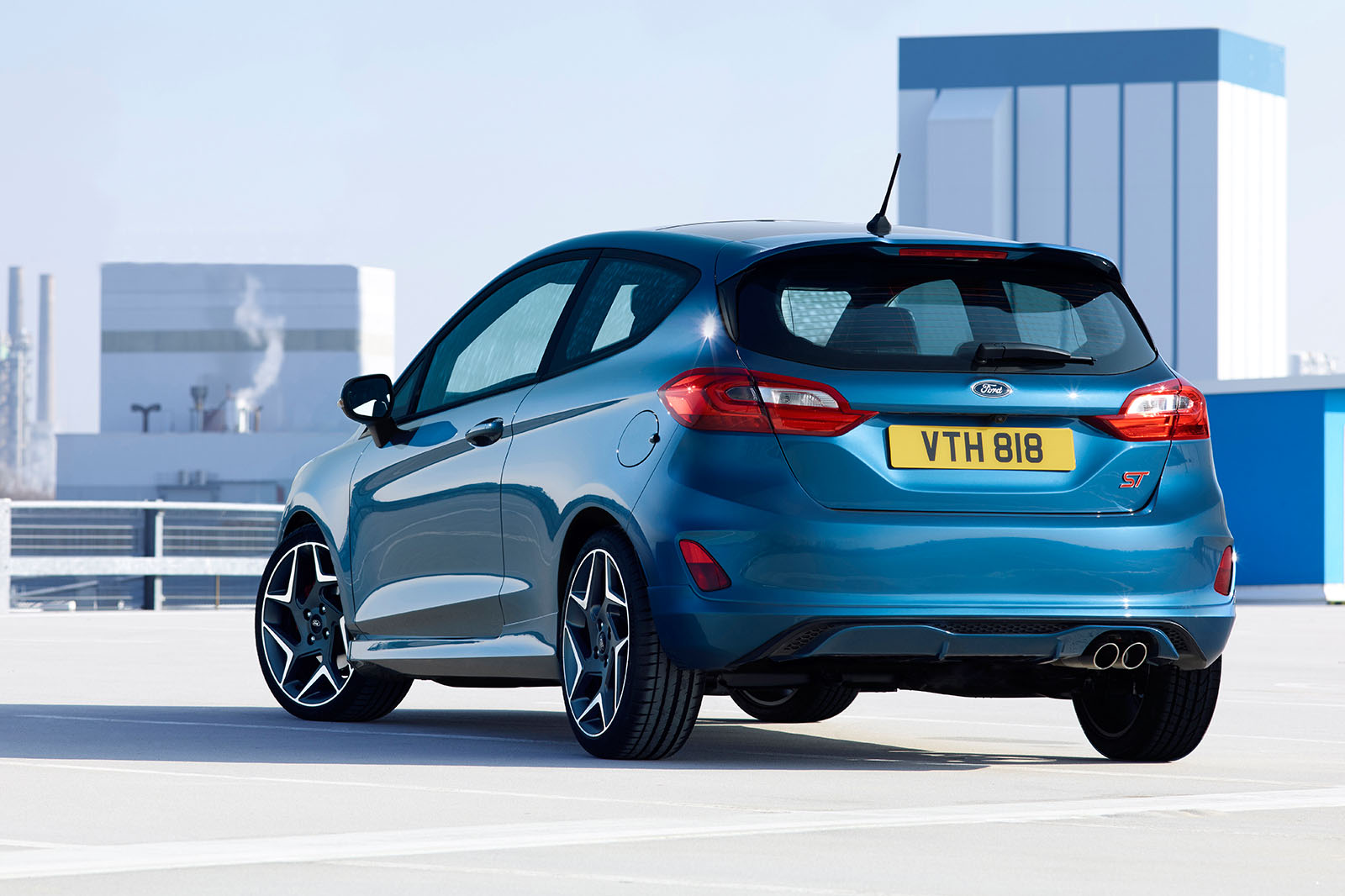
“Next-generation Fiesta ST customers will benefit from innovations developed by Ford Performance for the Ford GT supercar and Focus RS hot hatch, including fuel injection and drive mode technologies,” said Ford Performance boss Dave Pericak.
Ford of Europe product boss Joe Bakaj added that the new model will “deliver the most versatile, fun, engaging and rewarding Fiesta ST driving experience yet”.
Three-cylinder 1.5-litre Ecoboost for Ford Fiesta ST
Sitting alongside the well-received 1.0-litre Ecoboost used across the Ford range, the 1.5-litre engine has 214lb ft and uses turbocharging, high-pressure fuel injection and twin independent variable cam timing, all of which delivers “optimised performance and fuel efficiency”, according to Ford. A new turbocharger features an optimised turbine design to build boost pressure more quickly and to minimise lag, according to the car maker.
The engine also features cylinder deactivation technology, a world first for a three-cylinder engine but increasingly common on bigger engines and used frequently on Volkswagen Group TSI petrol units. The move will help improve fuel efficiency by shutting down one cylinder when full capacity power isn’t needed, such as when cruising with little demand on the engine.
Matthias Tonn, chief programme engineer of the car said: "The new 1.5 Ecoboost engine is the new core, the heart of the car. It's so much more responsive, more agile, than the current car.
"Efficiency is a big part of this car. The CO2 is down at 114g/km, and it has the same performance. It's a very agile engine also, has great responsiveness, new calibration, a new way to ignite the fuel. The engine is more direct and lively.
Tonn added: "There is no turbo lag now. We don't even talk about it. You press a button [the throttle] and the car goes. Software calibration and processor speeds are all much quicker. It's fun to drive, and will have a bigger grin on it than the old Fiesta ST."
Fiesta ST offers three new driving modes
A major new addition for the Fiesta ST is the introduction of three drive modes: Normal, Sport and Track.

Normal mode is the default setting, where all systems, including the traction control and electronic stability control (ESC), are configured to give a natural driving feel.
In Sport mode, engine mapping and throttle pedal response are sharpened and there’s more “driving feedback”, says Ford. Sport mode also creates more noise, through Ford’s Electronic Sound Enhancement technology and the opening of the active exhaust noise control valve, both of which heighten the exhaust note and engine noise within the cabin.
In Track mode, Ford says all of the vehicle’s dynamics are tuned for the fastest possible lap times, traction control is disabled and electronic stability control is set to wide-slip mode for circuit driving.
ESC offers drivers a choice of three modes — full system intervention, wide-slip mode with limited intervention and full system deactivation.
The ST’s chassis also uses torque vectoring to improve roadholding and reduce understeer by applying braking force to the inside front wheel when cornering.
Tonn commented: "We have spent a lot of time on the suspension and chassis, and found a new way to set it up."
He added that there has been a lot of work to finesse the sound. "We have the active exhaust from the Mustang. On low rpm, the exhaust valves open. At higher rpm, there's a sound enhancement system that amplifies the sound. This used to be digital sounding, but faster processors now make it sound more alive."
"The benchmark was the old ST, then the ST200 came long. It has been a very good basis for this."
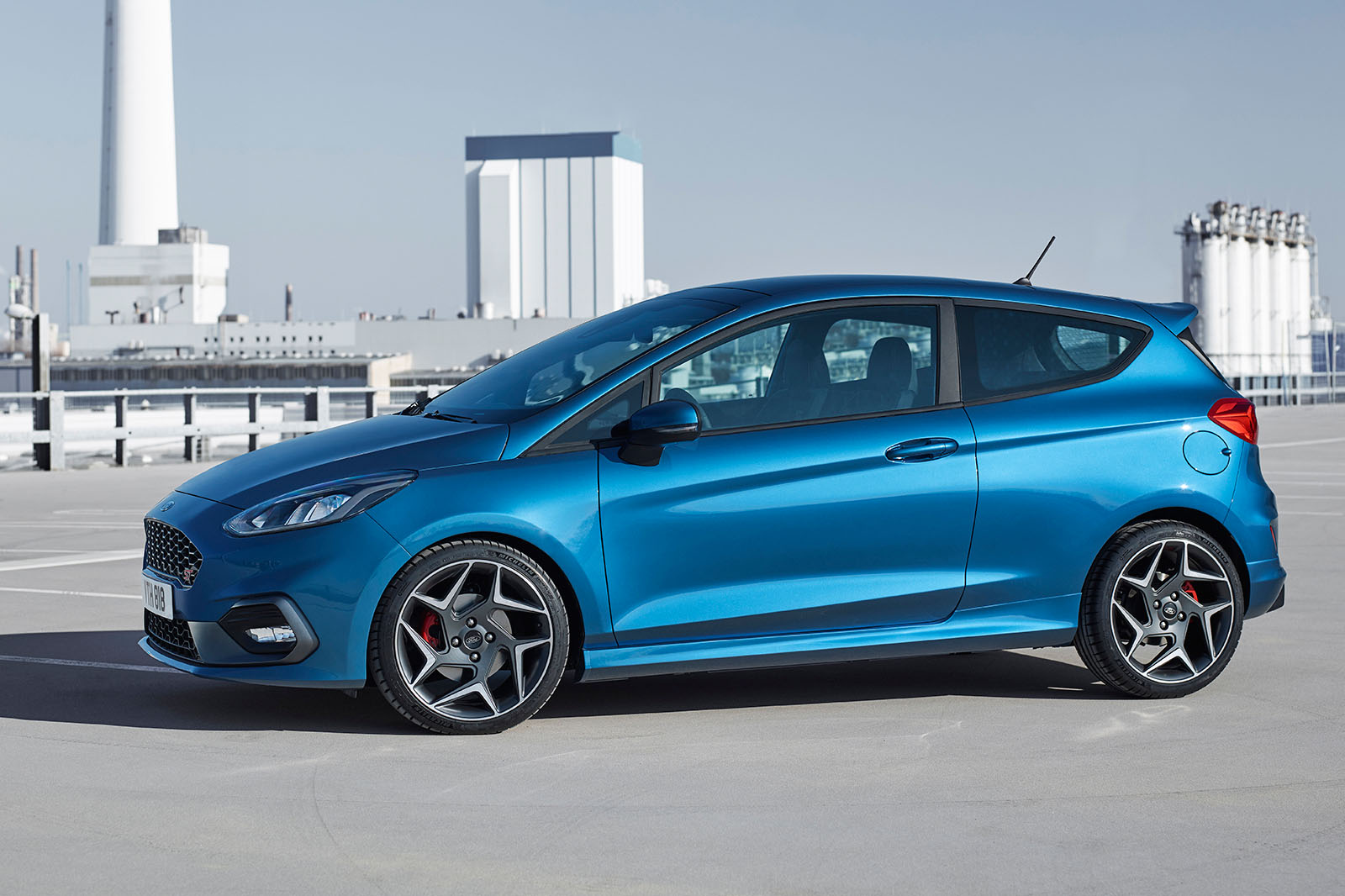
Ford Fiesta ST design details
Available in three-door and five-door versions, echoing the current ST, the car’s exterior design includes a “race car-inspired” mesh grille, large rear wing and exclusive 18in alloy wheels, as well as a new Liquid Blue paint colour.
Inside, there are Recaro seats and a flat-bottomed steering wheel. Customers can choose from a range of trims for the gearlever, steering wheel and door pulls, as well as a number of styling packs.
Ford’s latest infotainment system, Sync3, also features. It uses a tablet-like touchscreen up to 8.0in in size that can be operated with pinch and swipe gestures. The ST will also offer a high-end B&O Play sound system, first announced on the standard Fiesta late last year.
The new Fiesta ST goes on sale early next year and is expected to be priced slightly higher than the outgoing model, which starts at £18,145.
Ford video

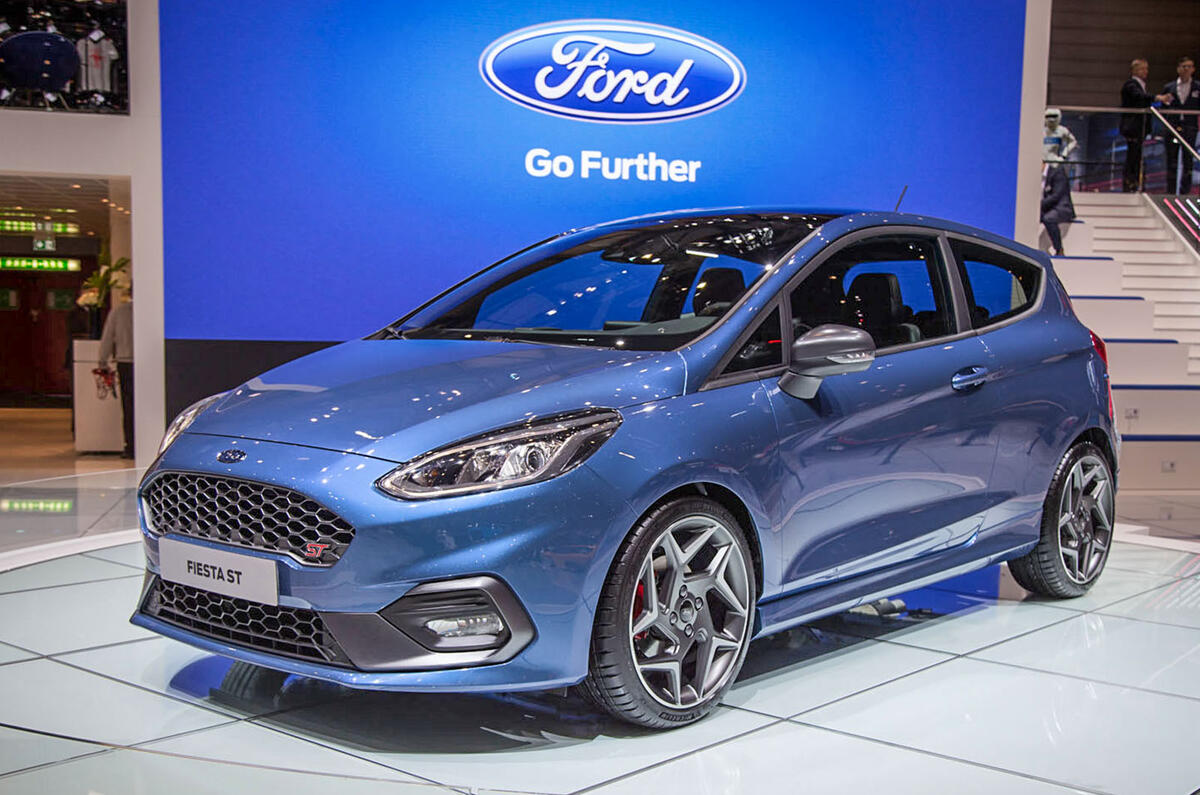
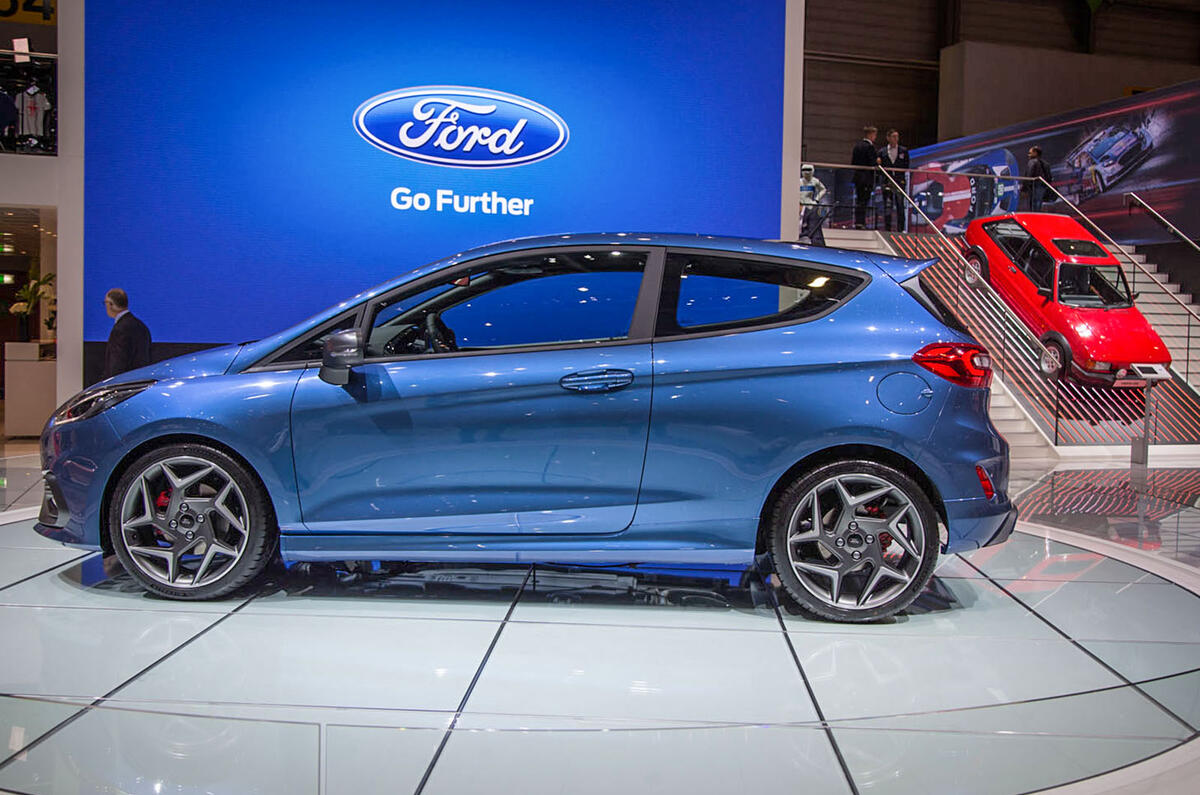

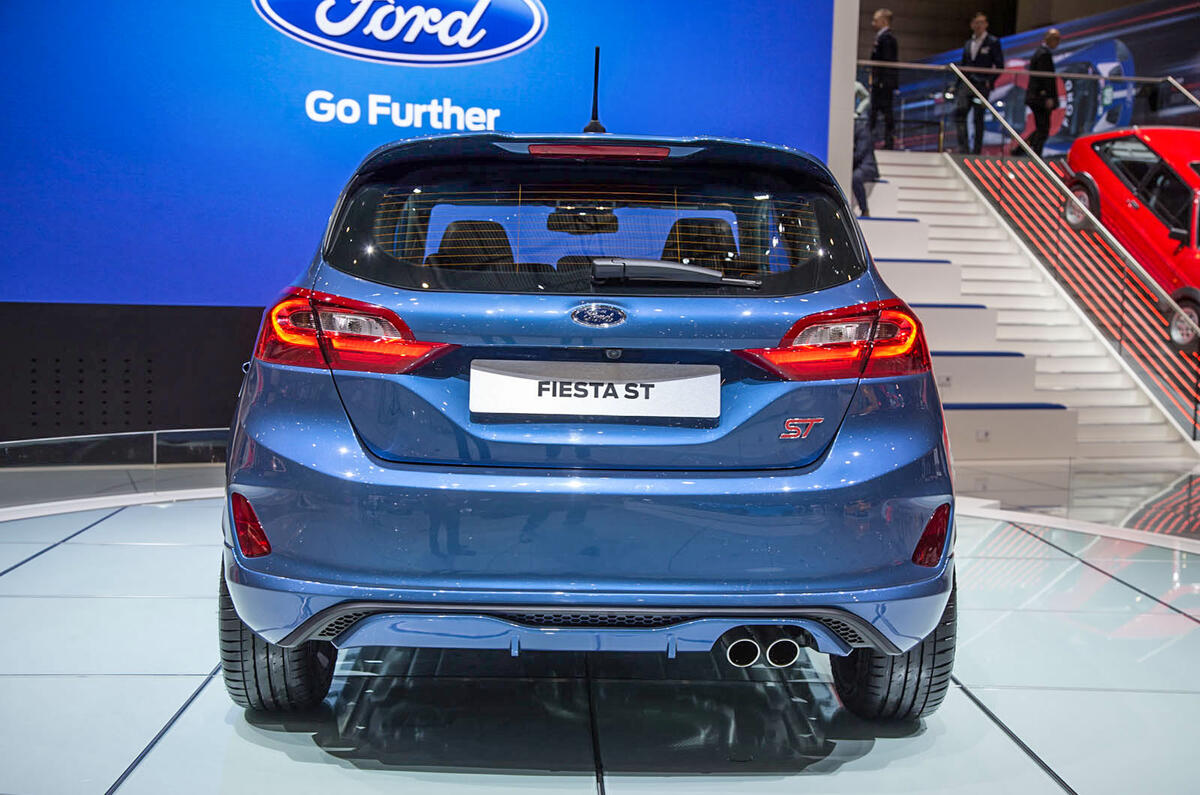
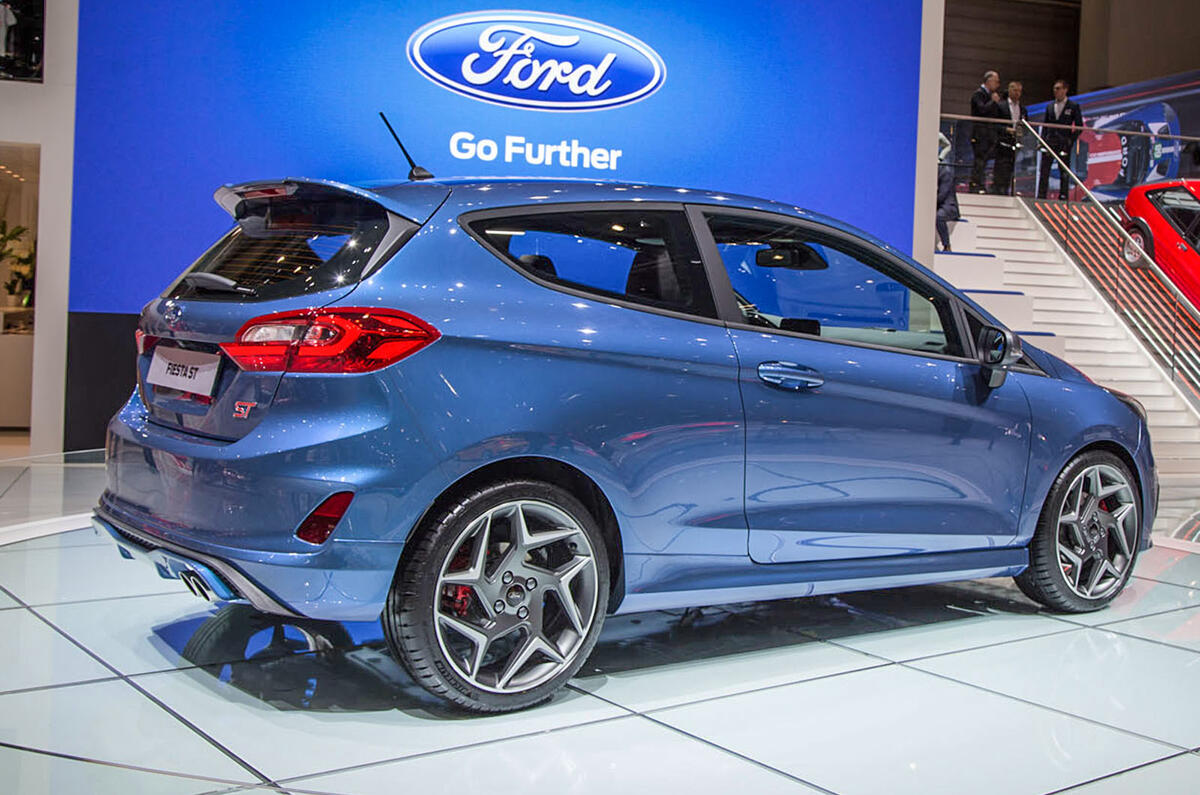
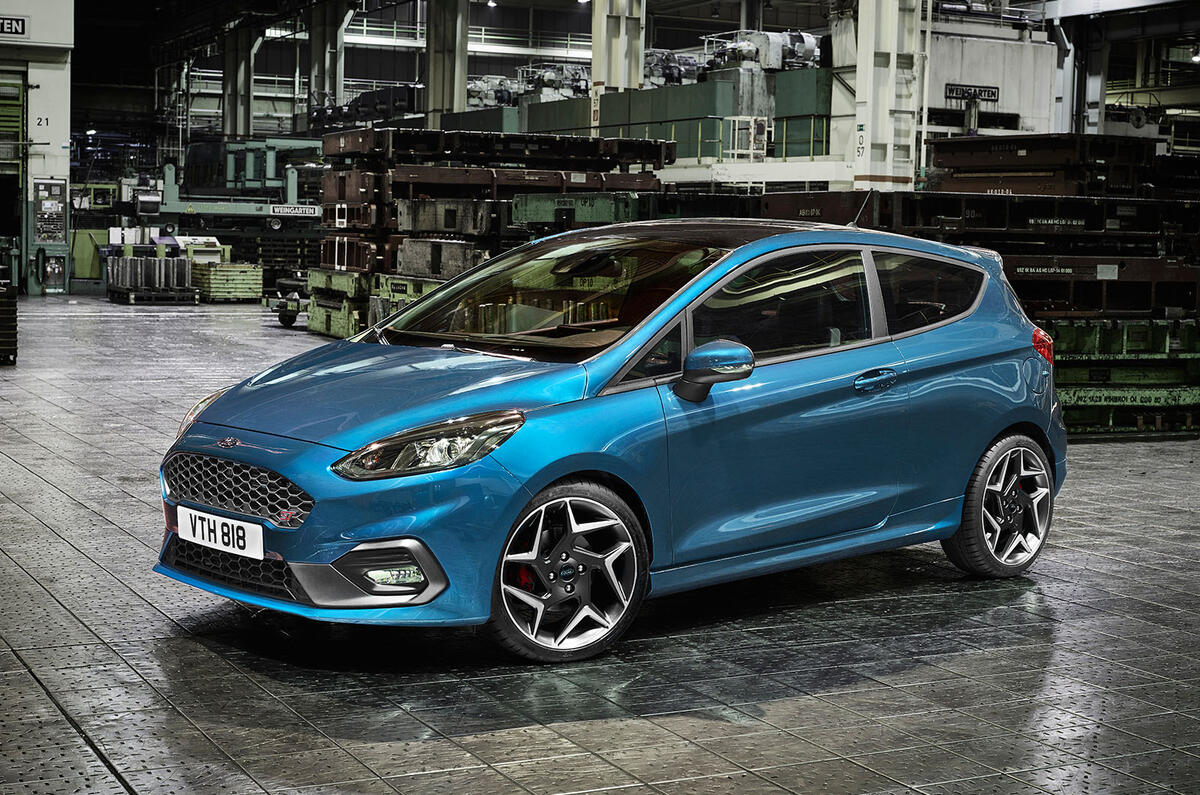
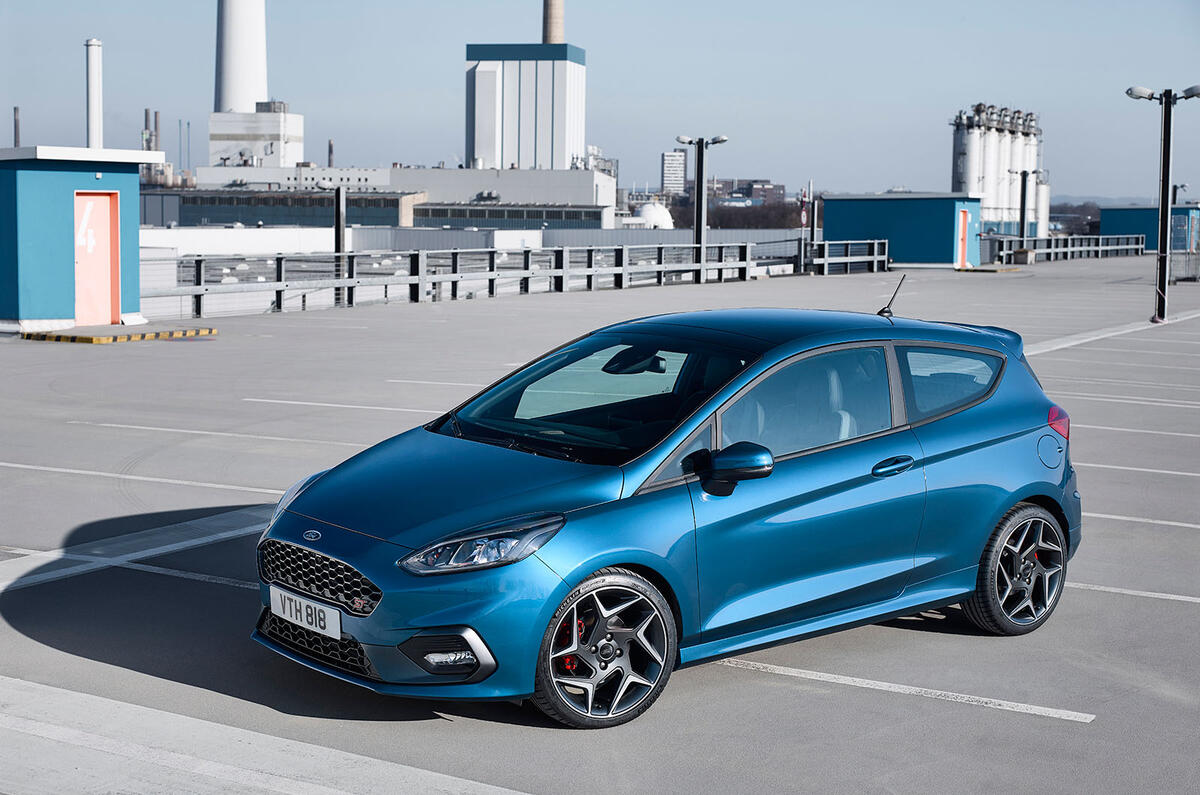
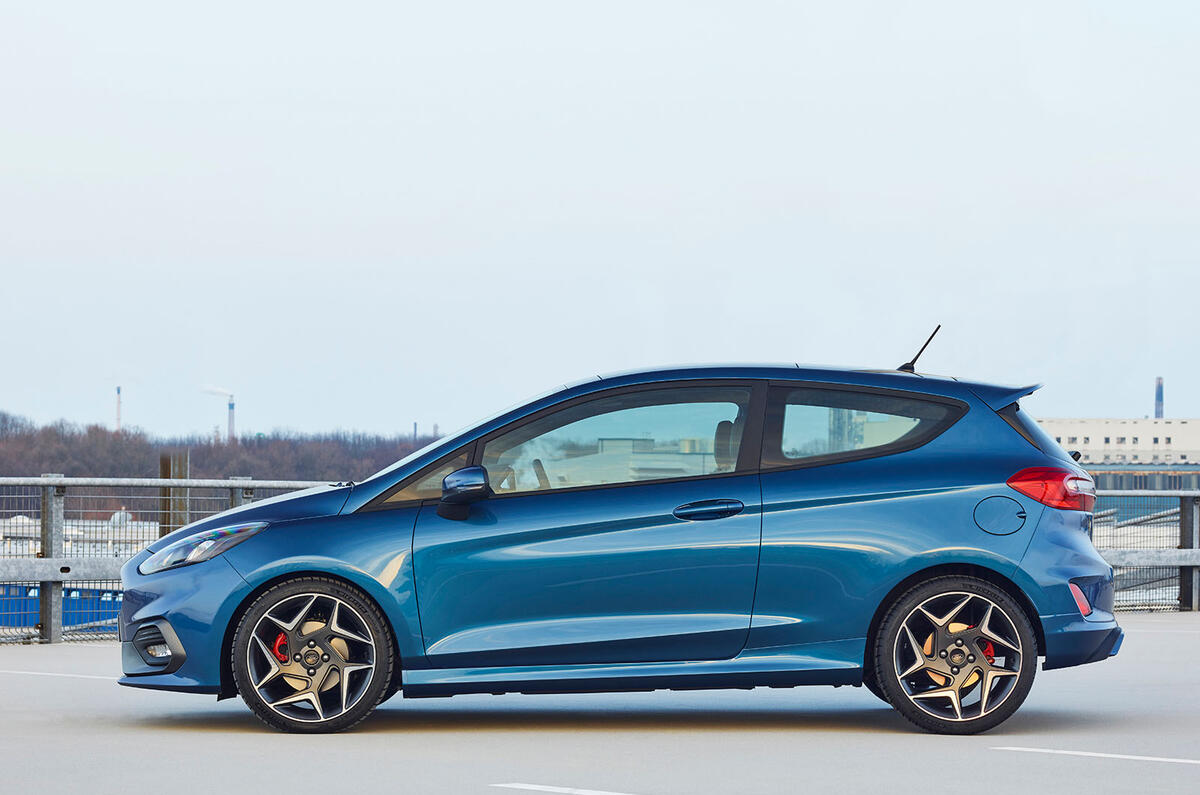
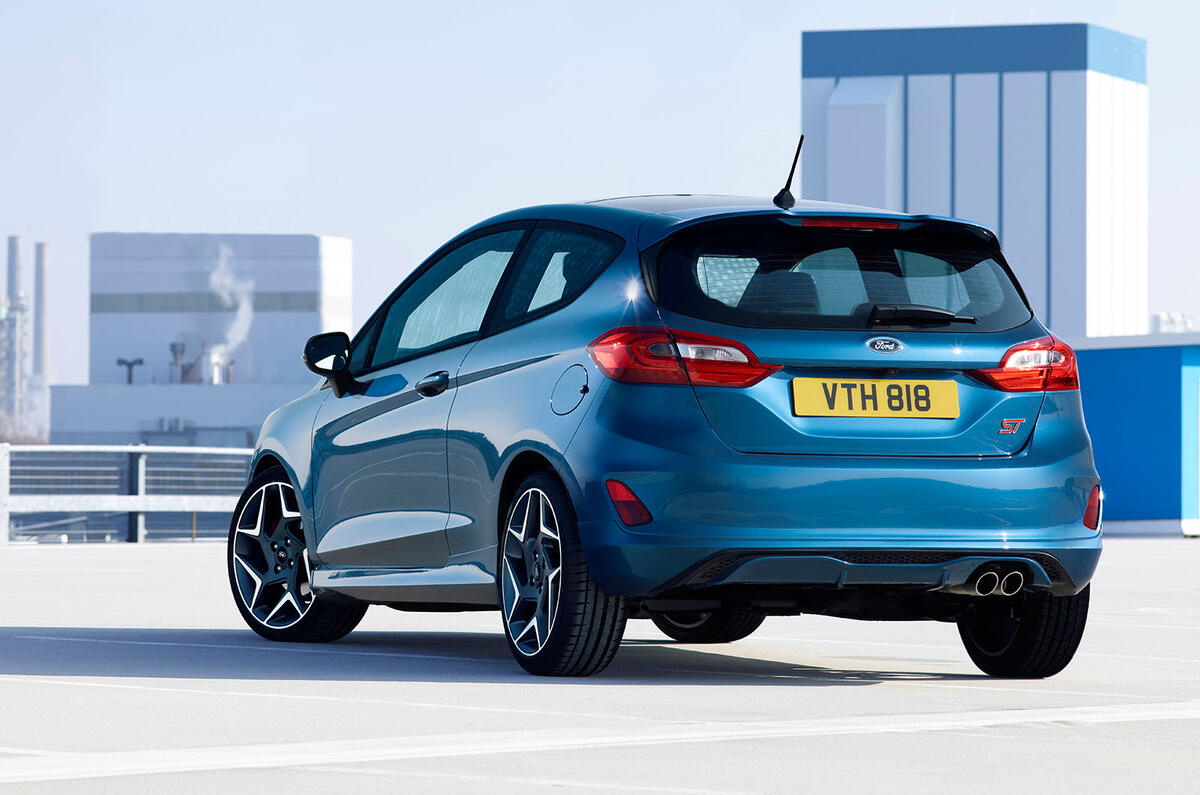
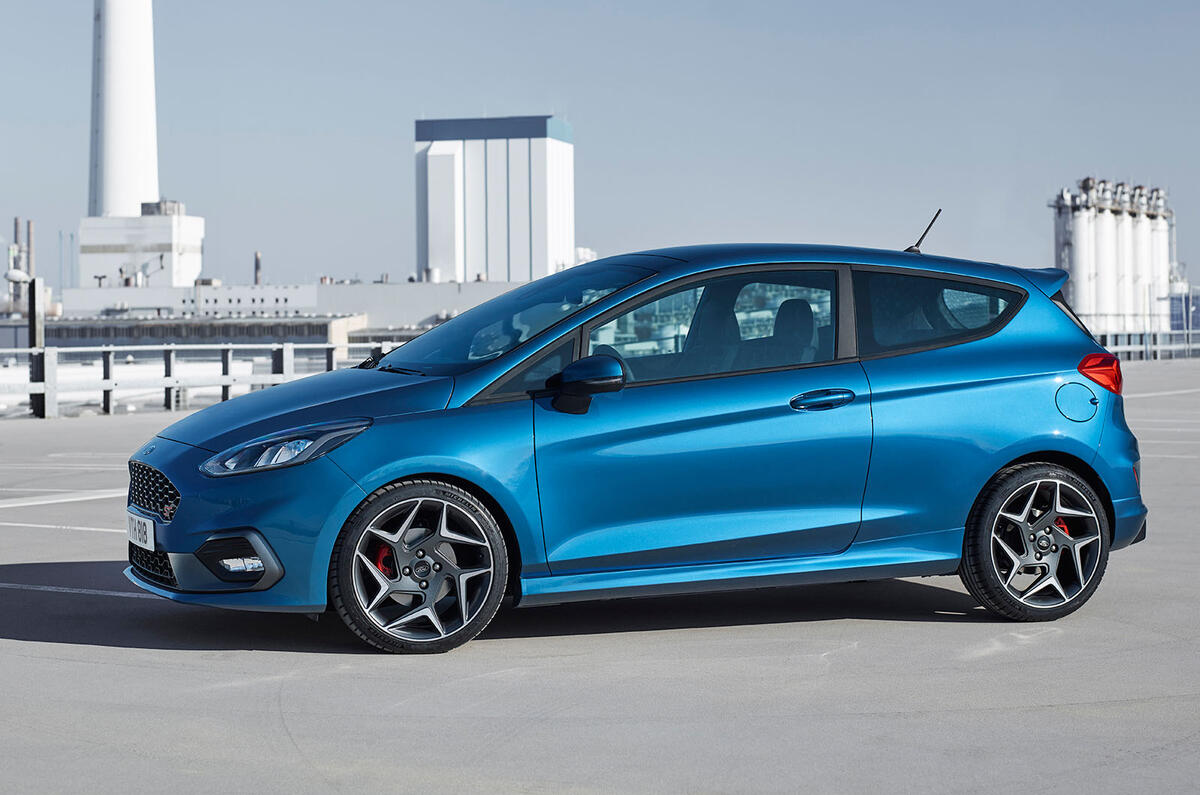
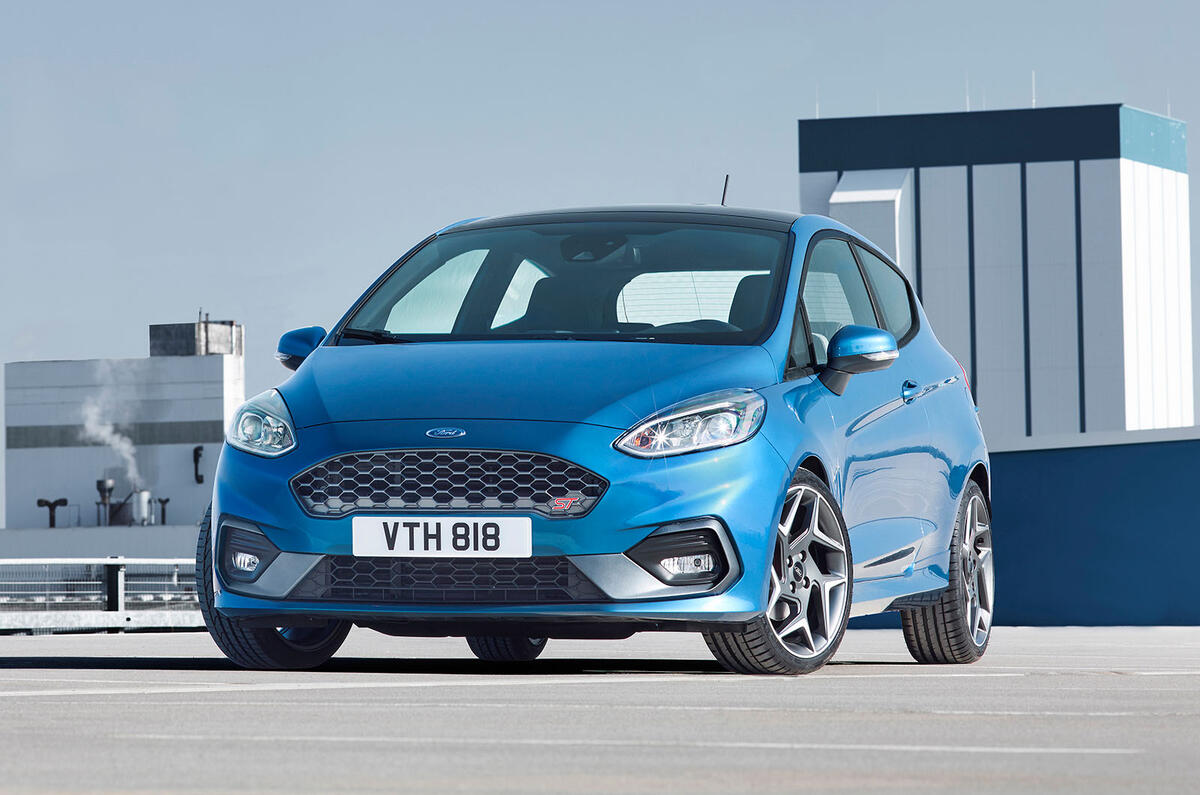
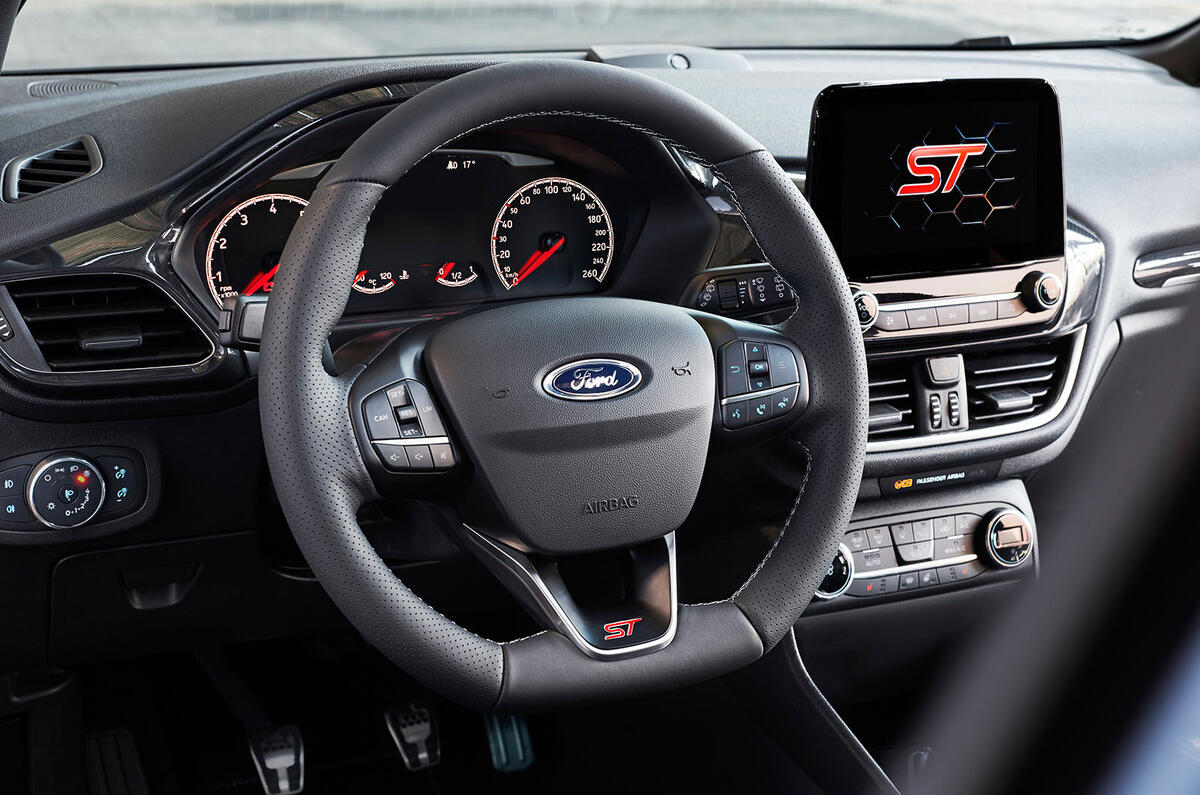
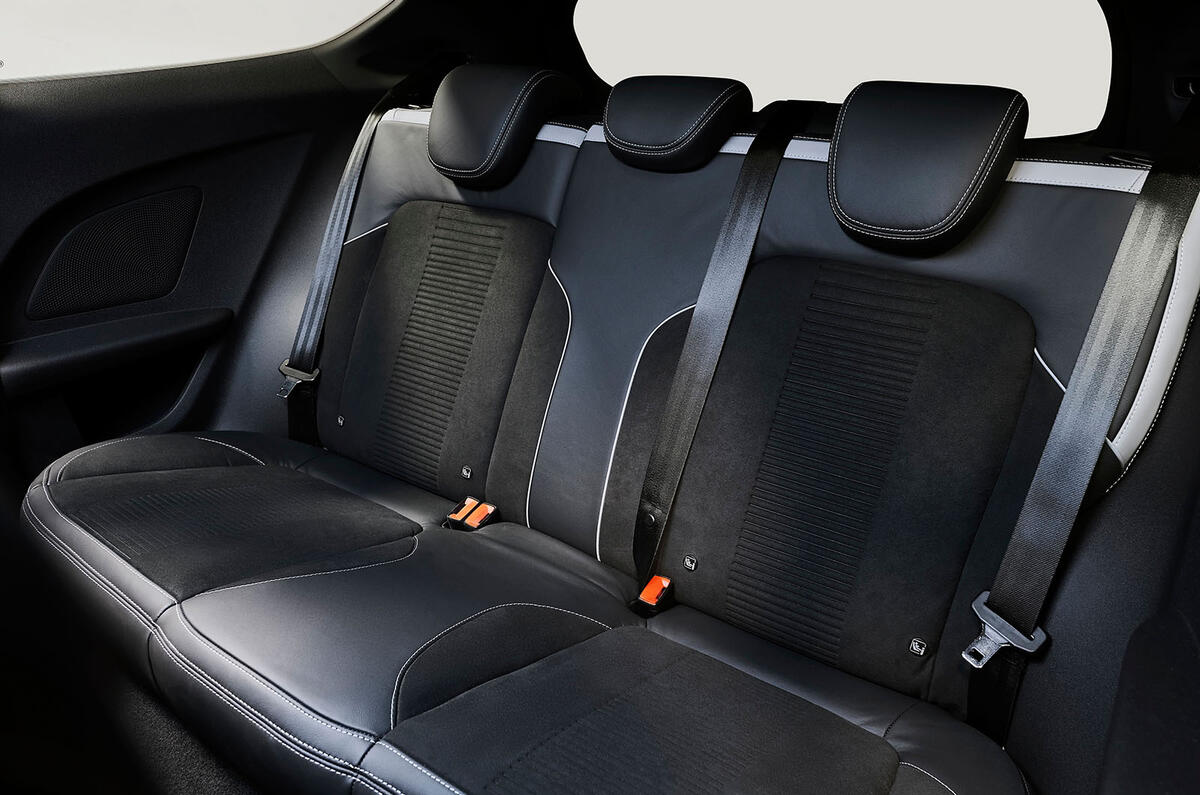
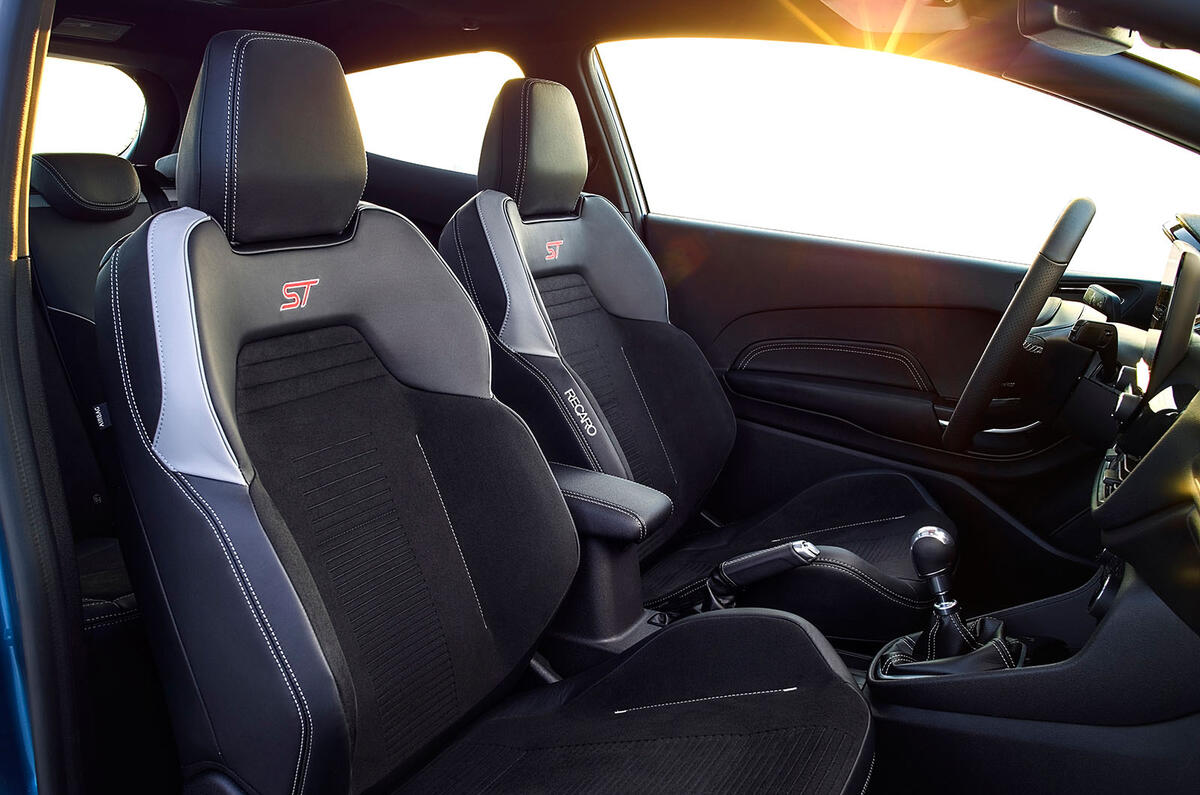
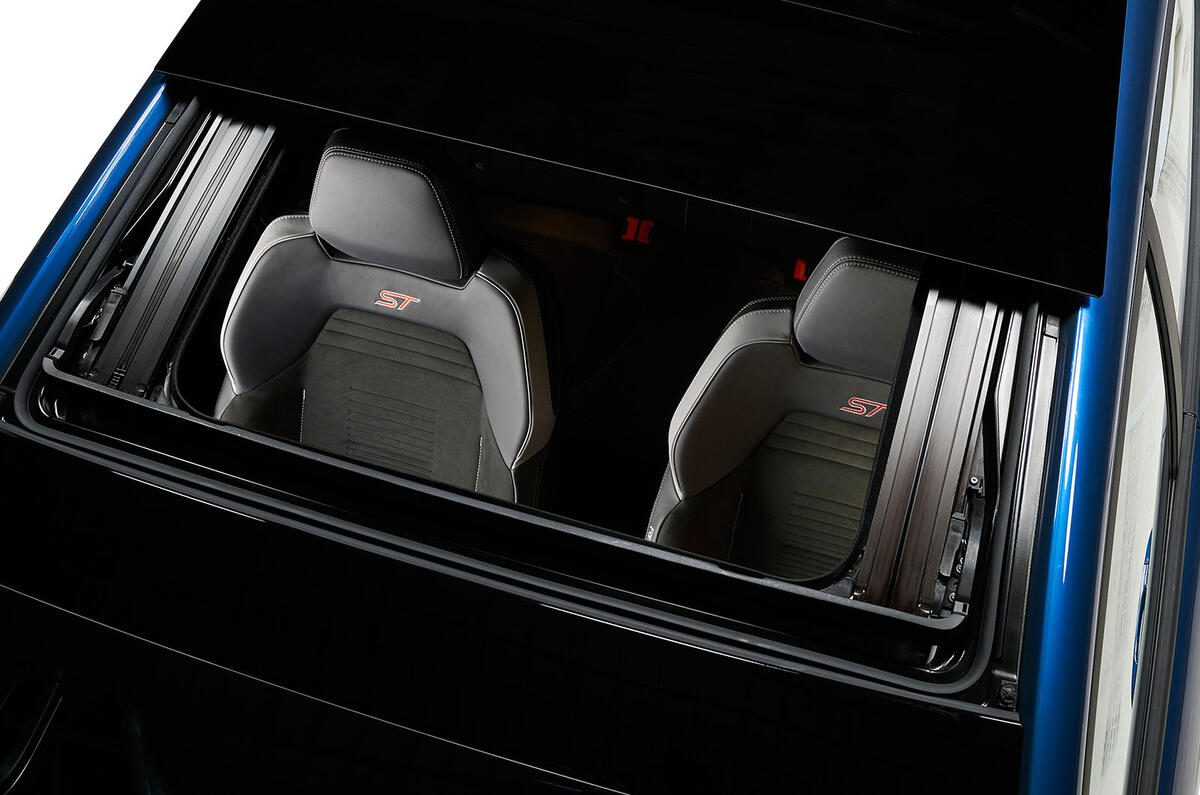
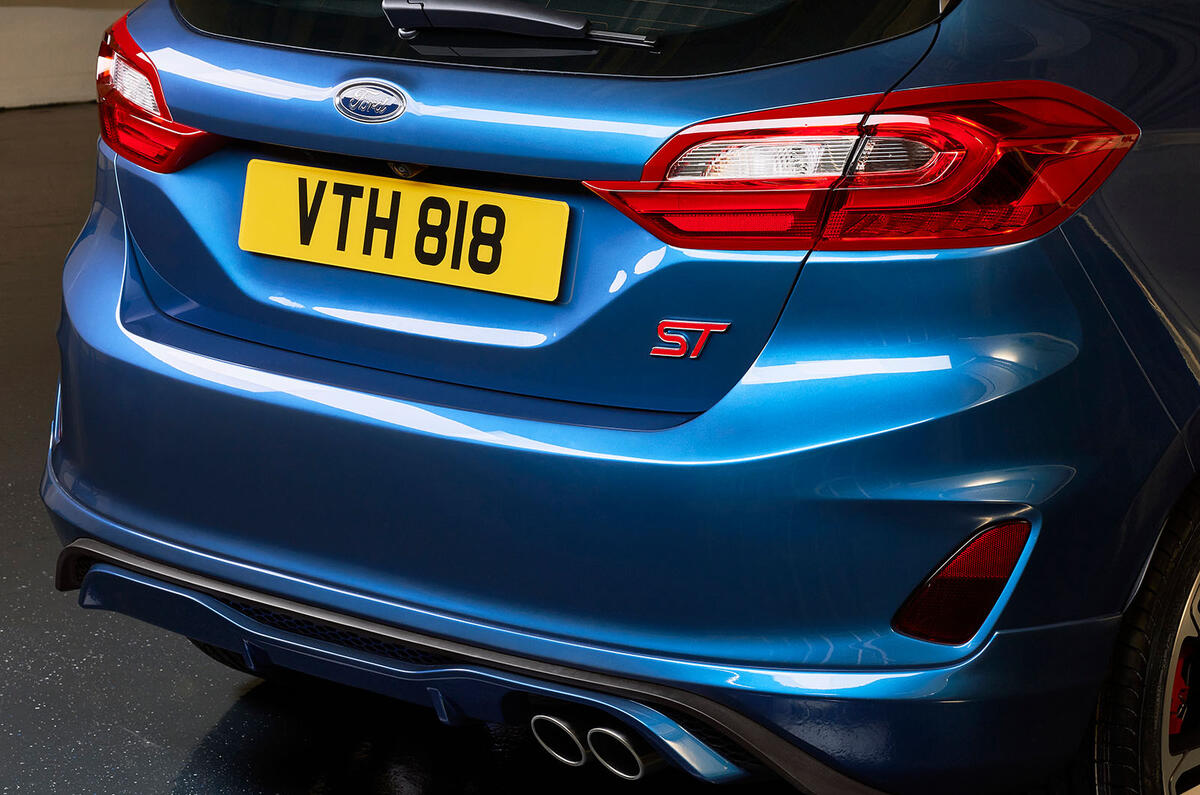
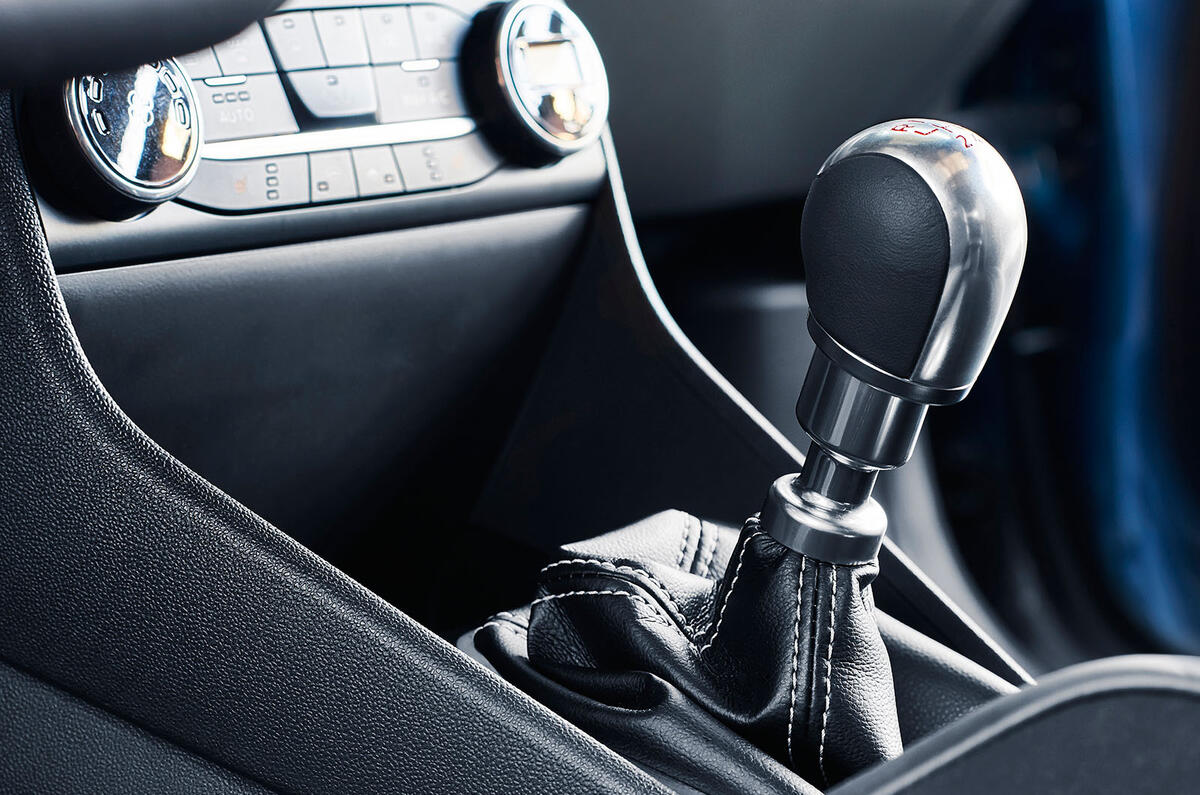
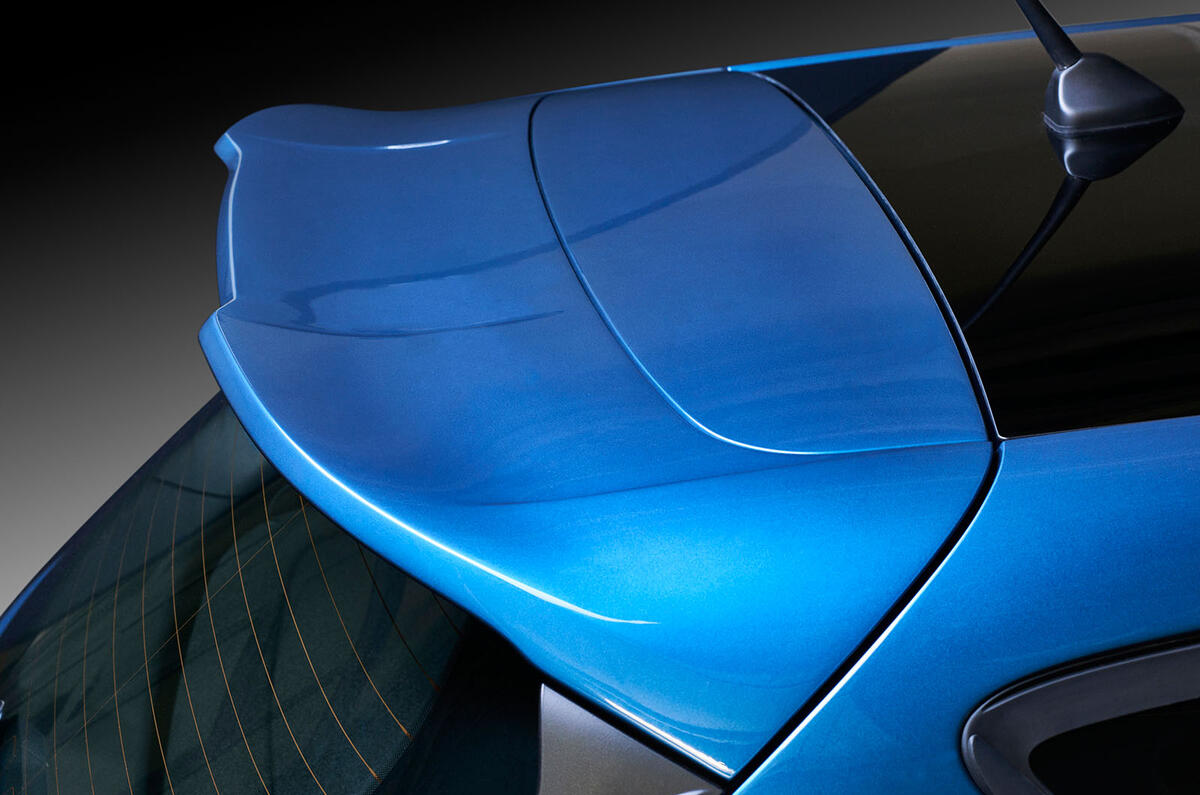
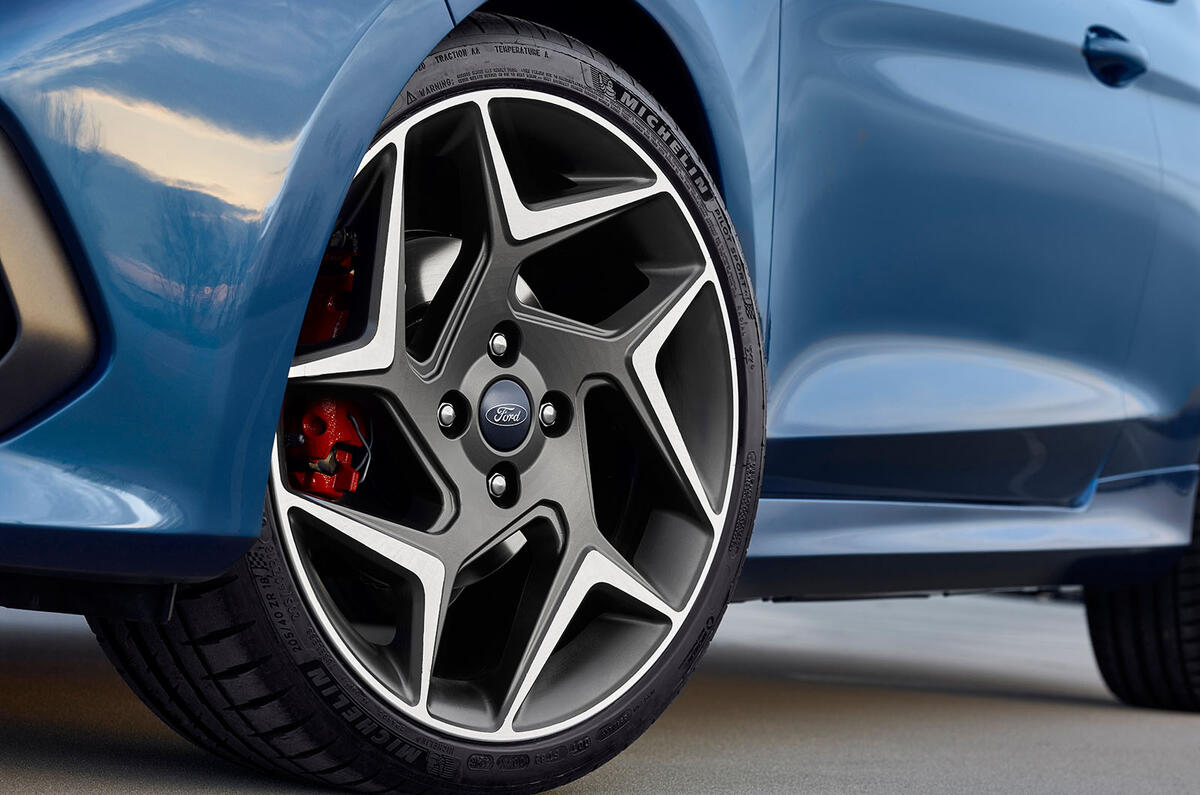
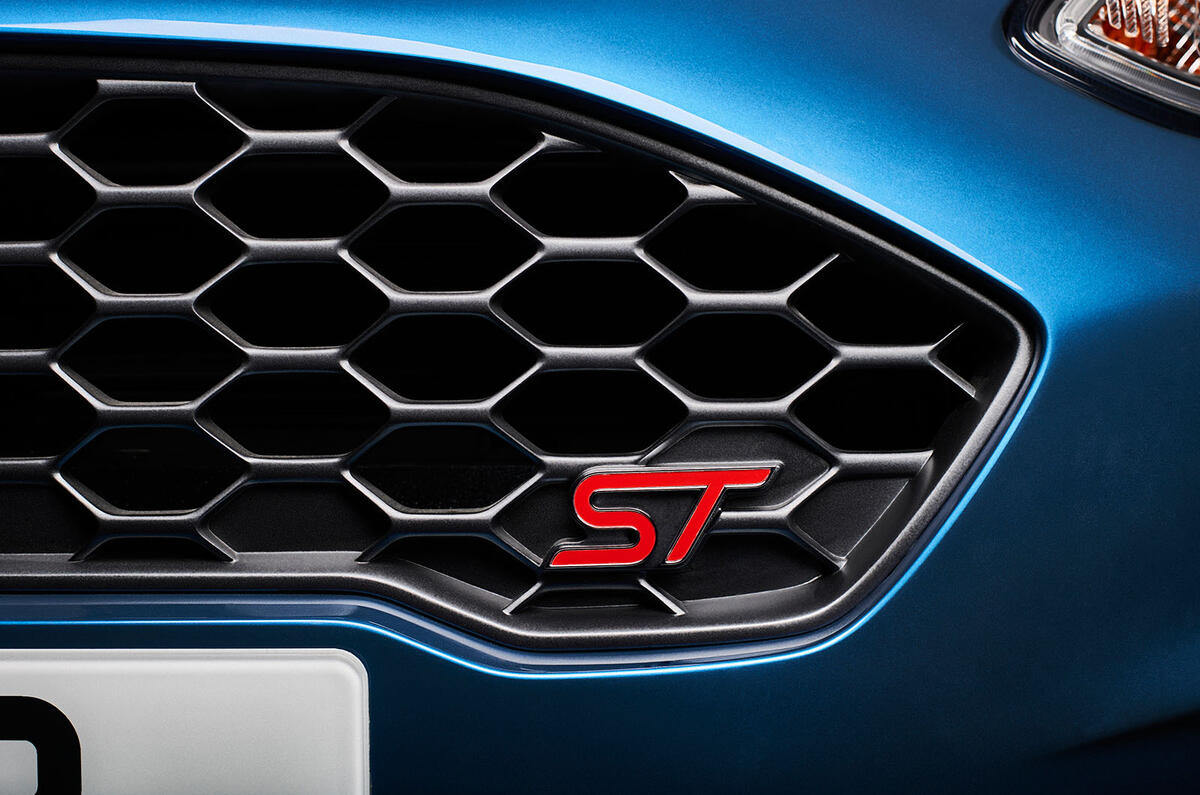
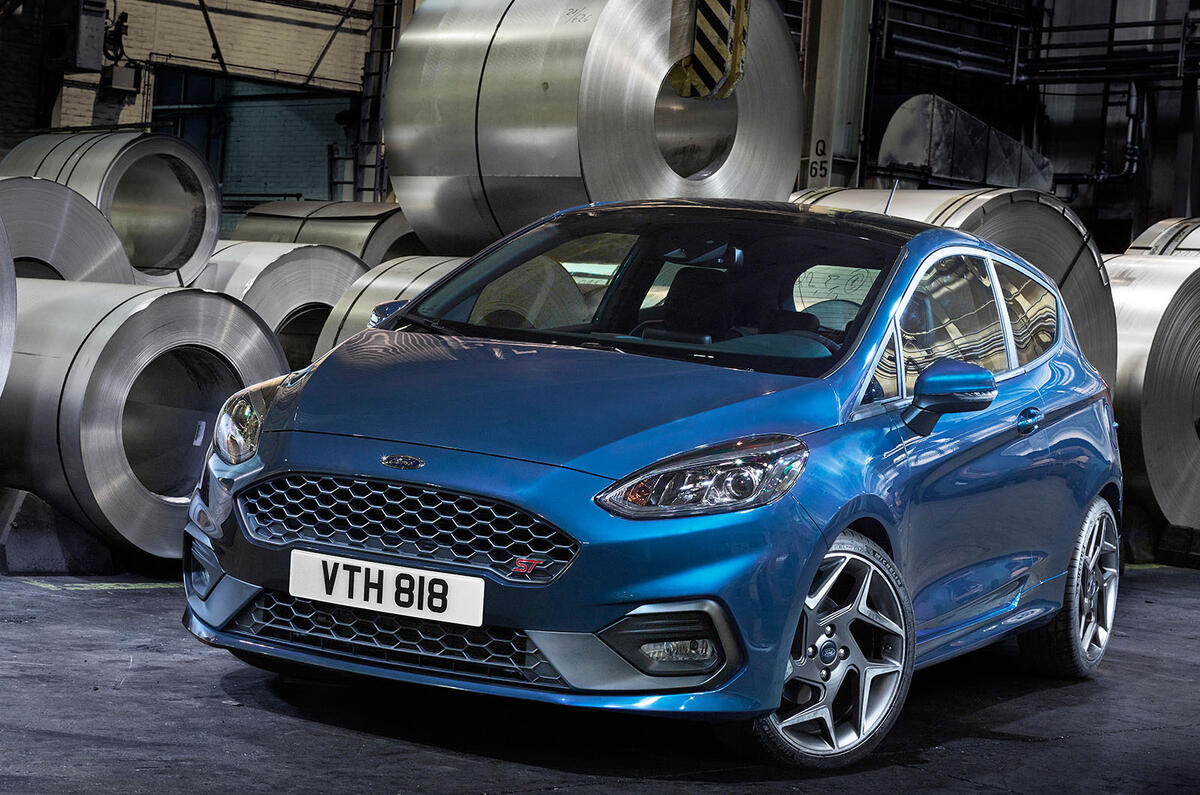
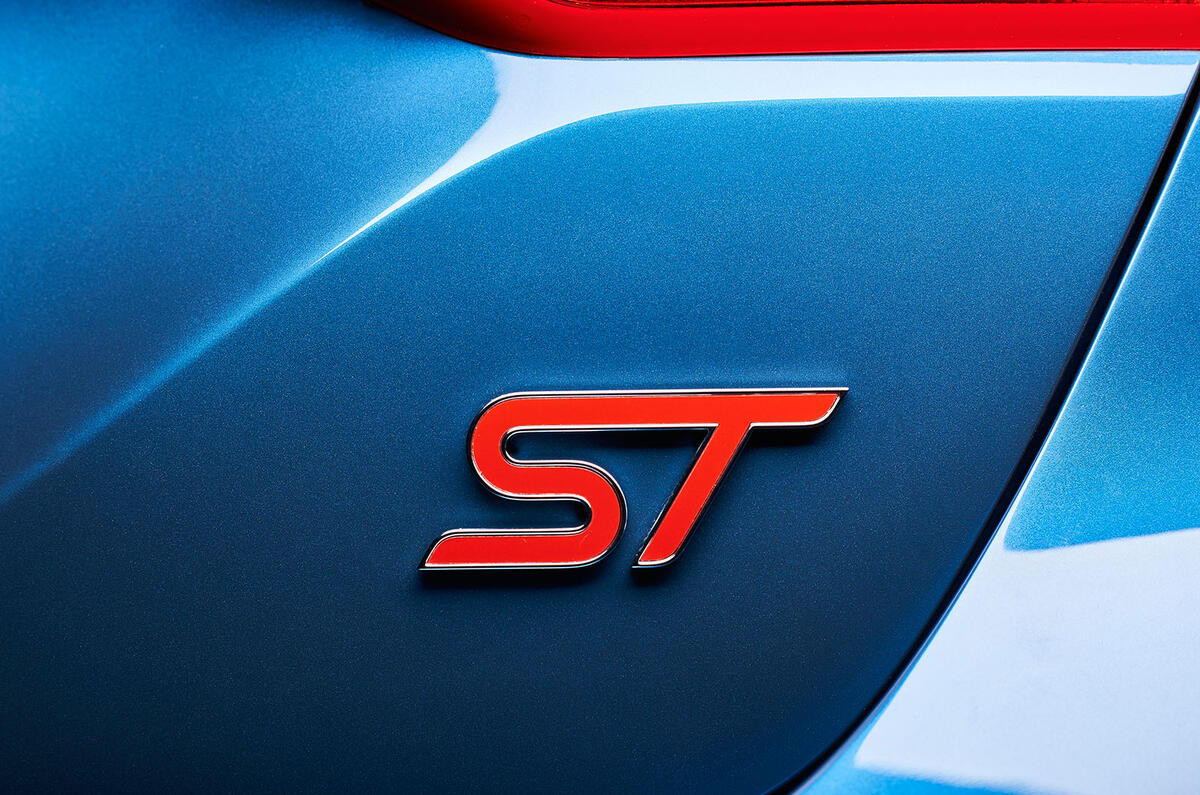
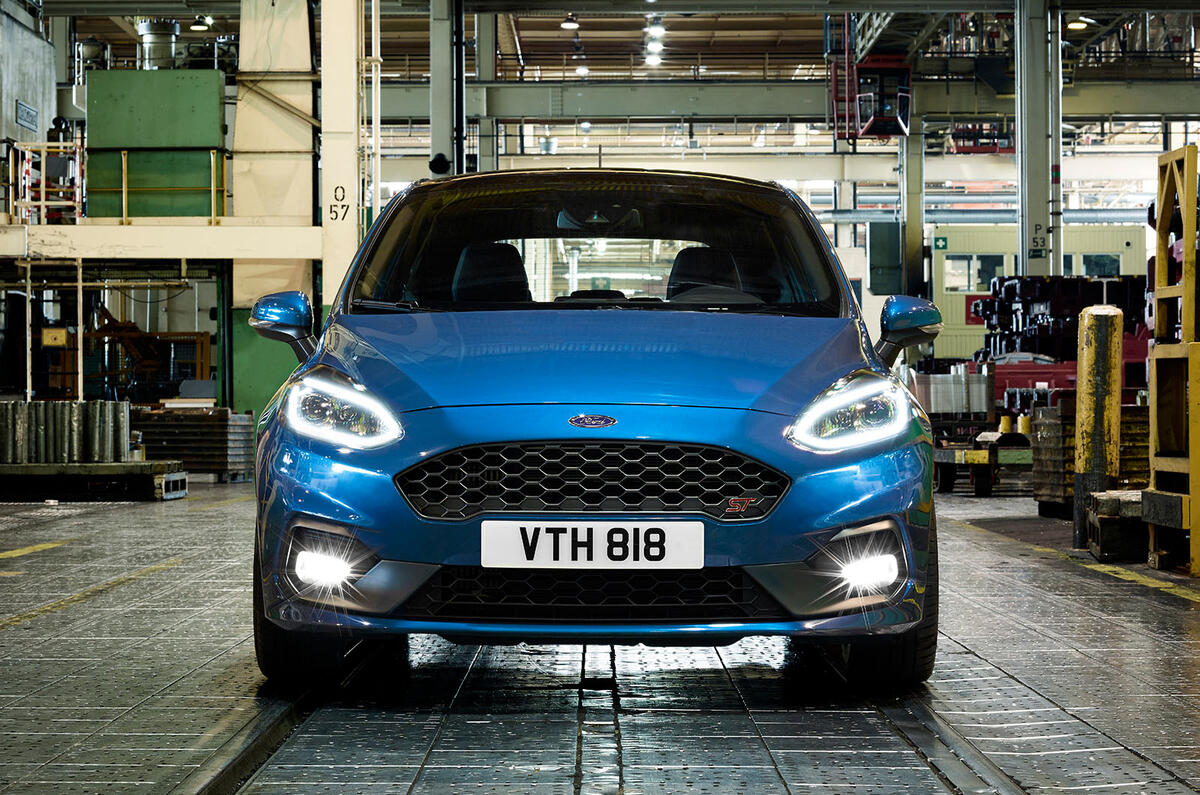
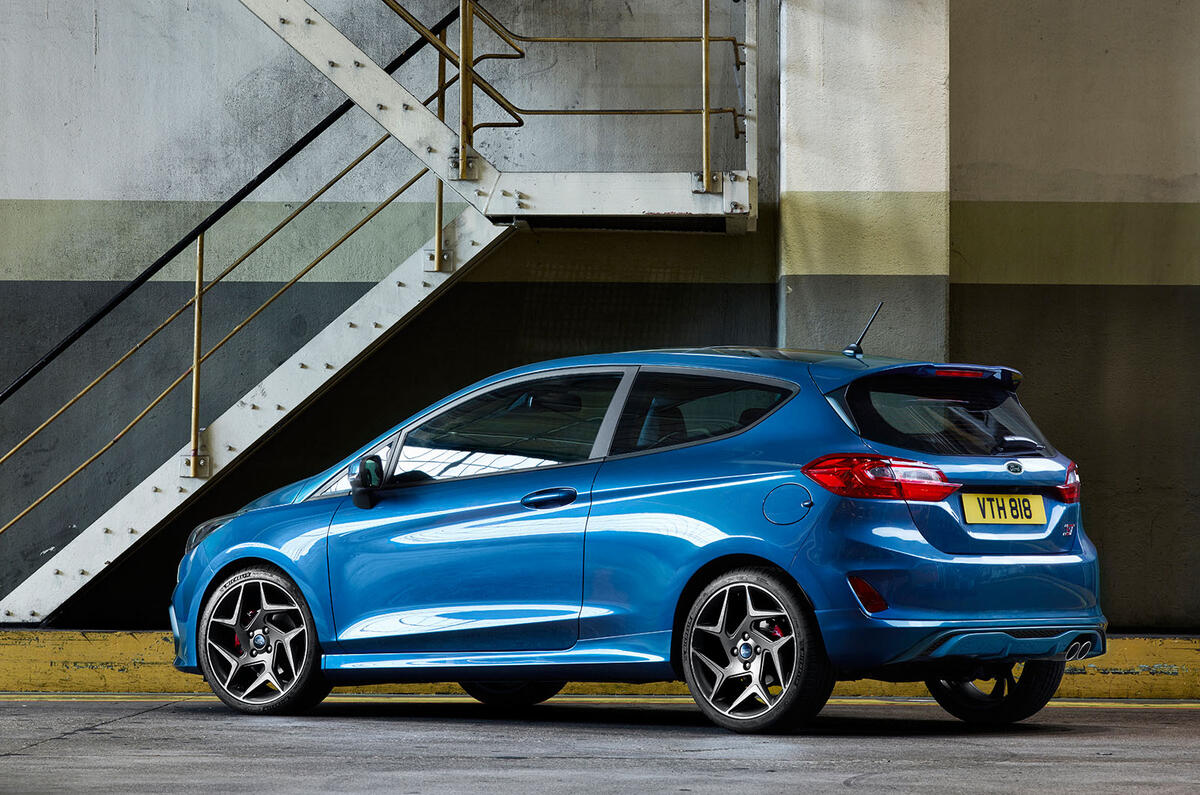
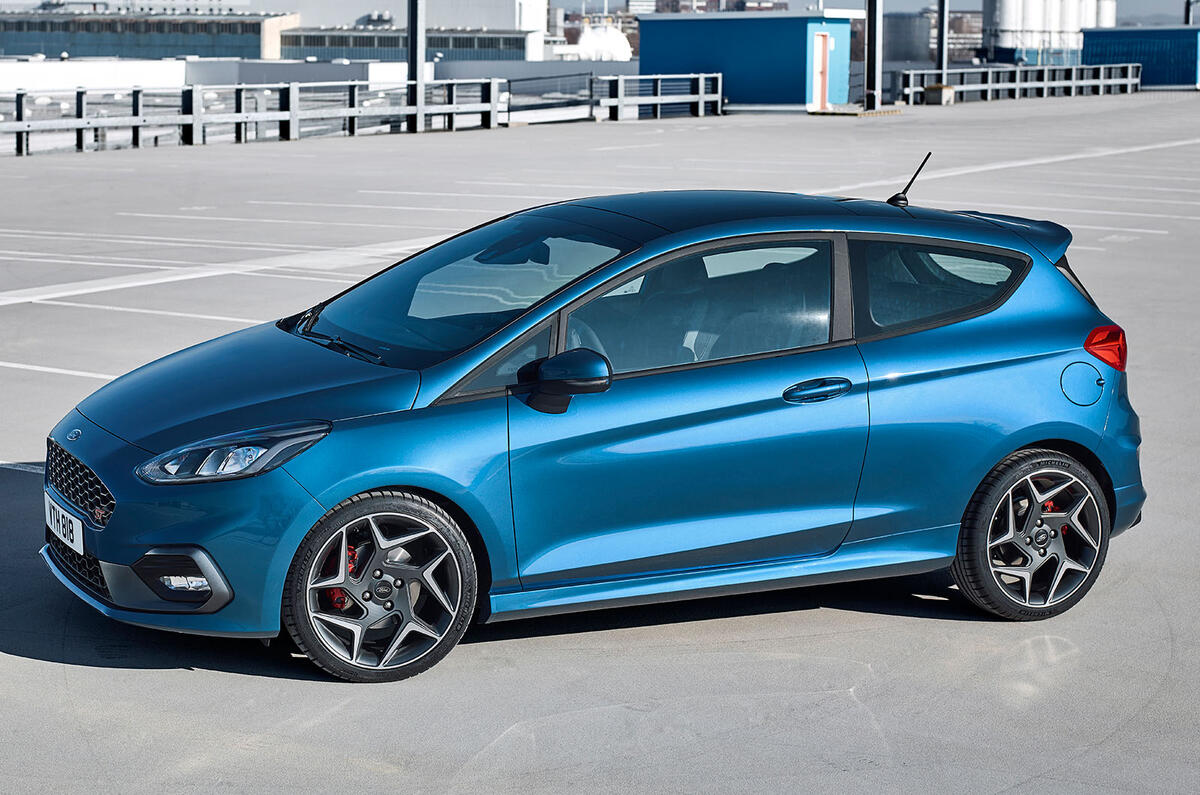






















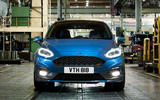




Join the debate
Add your comment
Obvious outcome
Rear end
3 better than 4
[quote=Spanner]A lot of fun.